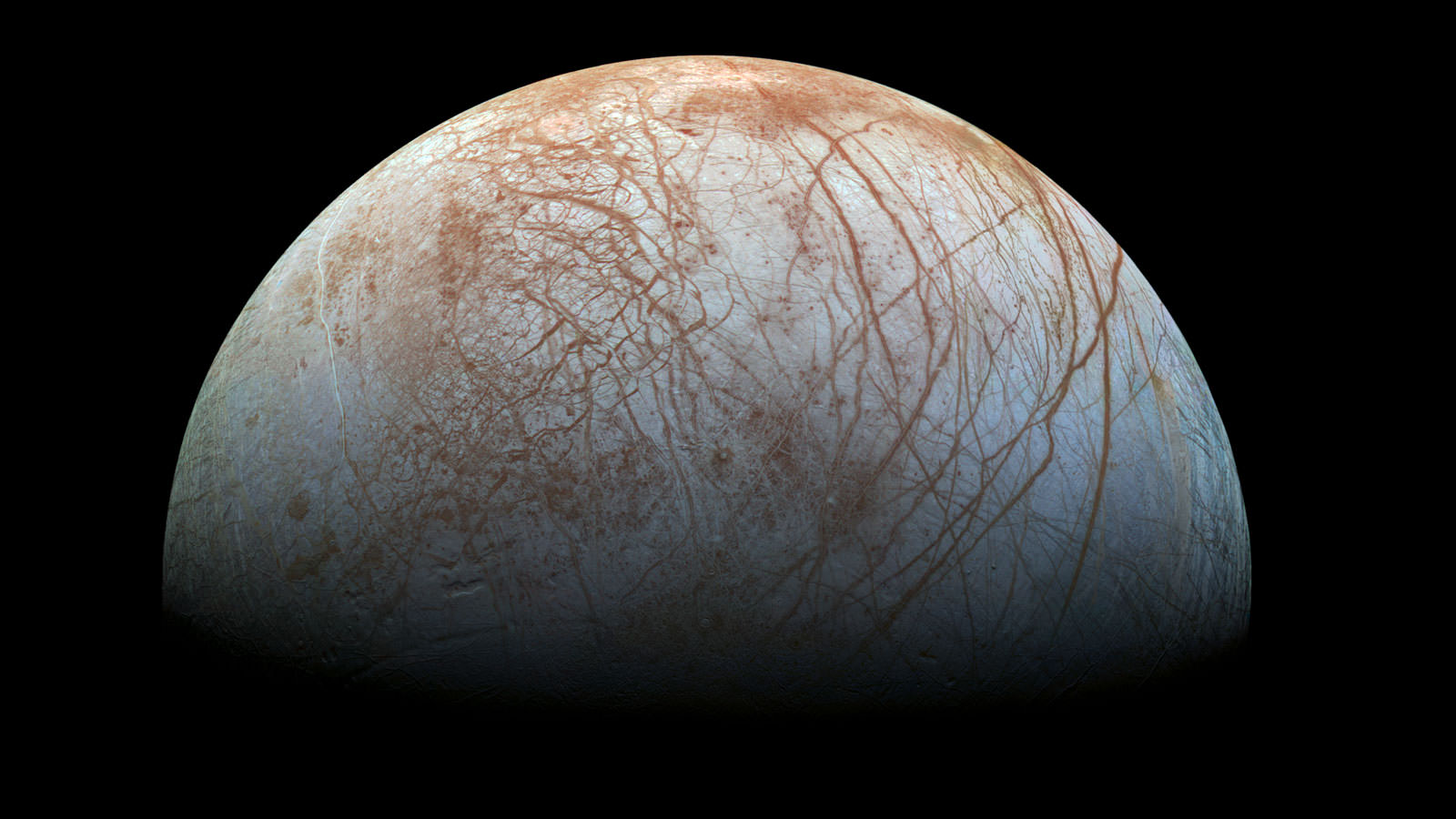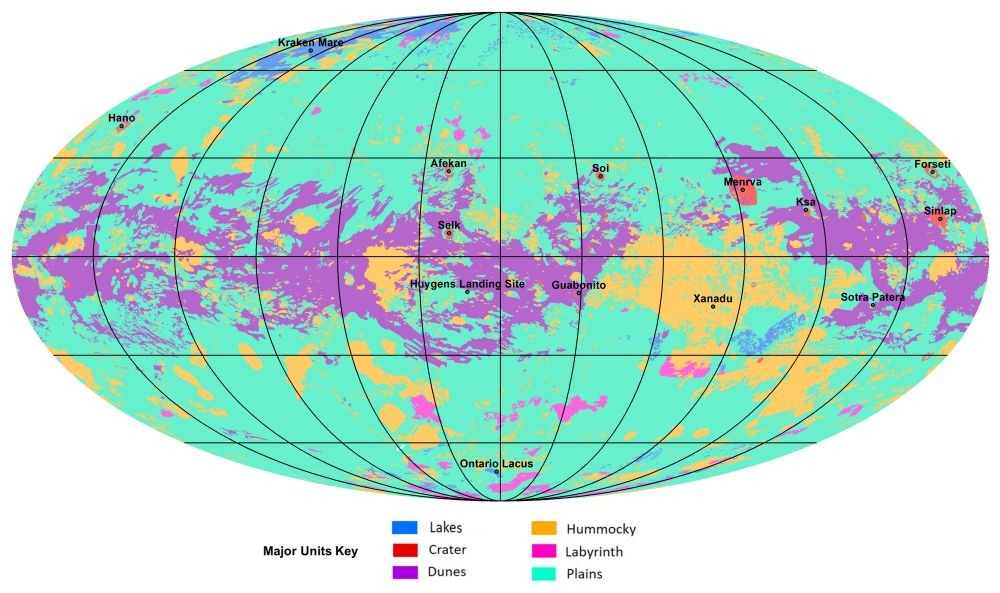Scientists have found evidence of plate tectonics on Jupiter’s moon Europa. This conceptual illustration of the subduction process (where one plate is forced under another) shows how a cold, brittle, outer portion of Europa’s 20-30 kilometer-thick (roughly 10-20 mile) ice shell moved into the warmer shell interior and was ultimately subsumed. A low-relief subsumption band was created at the surface in the overriding plate, alongside which cryolavas may have erupted. Image credit: Noah Kroese, I.NK
More evidence came from studying the brown splotches on Europa’s surface. Scientists hypothesized that those are chemicals from the subsurface ocean which have made their way to the surface. This shows that the sea floor might be interacting with the surface, an important consideration when thinking about habitability.
The discovery of liquid plumes raised the excitement level about Europa’s potential habitability.
For the little brown bat -- a small mouse-eared bat with glossy brown fur -- a warm, dry place to roost is essential to the species' survival. Reproductive females huddle their small furry bodies together to save thermal energy during maternity season (summer), forming "maternity colonies." In the face of severe population losses across North America, summer access to an attic or other permanent sheltered structure, as opposed to just trees or rock crevices, is a huge benefit to these bats.
[Bat image: By SMBishop - Own work, CC BY-SA 3.0, https://commons.wikimedia.org/w/index.php?curid=53580349]
The
upper galaxy is labelled UGC 1810 by itself, but together with its
collisional partners is known as
Arp 273. The overall shape of the UGC 1810 -- in particular its
blue outer ring -- is likely a result of wild and
violent gravitational interactions. The blue color of the outer ring at the top is caused by massive stars that are
blue hot and have formed only in the past few million years. The inner part of the upper galaxy -- itself an older spiral galaxy -- appears redder and threaded with cool
filamentary dust. A few bright
stars appear well in the foreground, unrelated to colliding galaxies, while several far-distant galaxies are visible in the background.
Arp 273 lies about 300 million light years away
toward the constellation of Andromeda. Quite likely, UGC 1810 will
devour its
galactic sidekicks over the next billion years and settle into a classic
spiral form.
Titan’s methane-based hydrologic cycle makes it one of the Solar System’s most geologically diverse bodies. There are lakes of methane, methane rainfall, and even “snow” made of complex organic molecules. But all of that detail is hidden under the moon’s dense, hazy atmosphere.
The map is based on radar, visible, and infrared images from the Cassini mission. The Cassini mission ended in September 2017 when it was directed to crash into Saturn. But even after two years, scientists are still going through Cassini’s data and producing studies like this one.

.JPG/800px-Little_Brown_Myotis_(cropped).JPG)


No comments:
Post a Comment